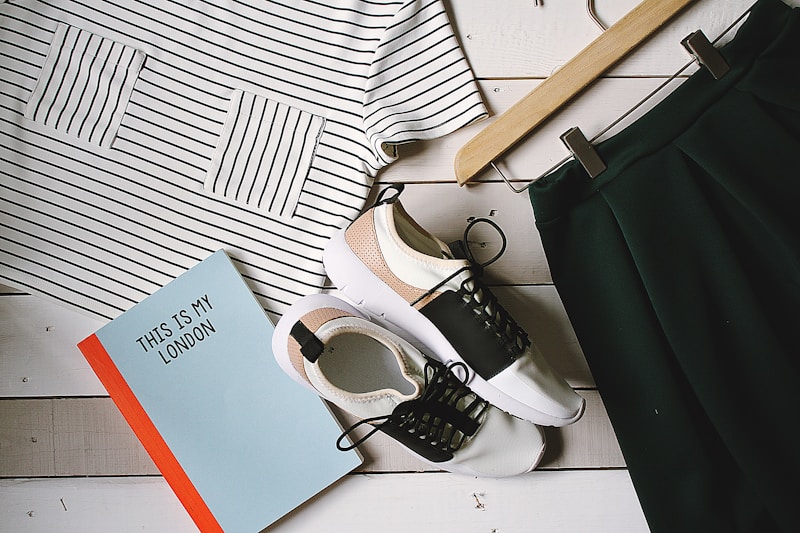Incorporating Personal Style in Fittings: A Guide to Tailoring Your Unique Look
Understanding Personal Style in Fitting Sessions
Fittings for clothing can often feel like a daunting experience, especially when it comes to finding the right fit that also reflects your personal style. It's essential to remember that fittings are not just about measurements; they are also about expressing who you are through your clothing choices. In this article, we will delve into how you can incorporate your personal style during fittings, ensuring that your clothing not only fits well but also resonates with your individuality.
Why Personal Style Matters in Fittings
When you think about fittings, the first thing that comes to mind might be the technical aspects of garment fitting, such as size, proportion, and balance. However, your personal style should be at the forefront of these fittings. Personal style is a representation of your identity and can be influenced by various factors such as culture, lifestyle, and even current trends.
Understanding Your Personal Style
Before heading to a fitting, take some time to reflect on your personal style. Are you more inclined towards classic, bohemian, urban, or edgy looks? Understanding these facets will help you communicate your vision more effectively to the tailor or designer. Consider creating a mood board that showcases the colors, fabrics, and silhouettes you love. This visual reference can serve as a powerful tool during your fitting sessions.
Preparing for Your Fitting Appointment
Preparation is key when it comes to successful fittings. Here are some steps to consider:
- Research: Look into different styles that inspire you. Use platforms like Pinterest or Instagram to gather ideas.
- Bring Examples: If you have specific outfits or accessories that resonate with your style, bring pictures or the actual items to your fitting.
- Know Your Measurements: Familiarize yourself with your body measurements to make discussions more efficient.
Communicating Your Style Preferences
During the fitting, it's crucial to articulate your preferences clearly. Here are some tips for effective communication:
- Be Descriptive: Use adjectives that reflect your personal style. For example, instead of saying "I want something comfortable," you might say, "I prefer a relaxed yet sophisticated look."
- Provide Visuals: Show your tailor images that represent your style. This can include swatches of fabric, pictures of styles, or even color palettes.
The Role of Fabric and Color in Personal Style
Fabric and color are two of the most influential elements when it comes to personal style. The right combination can significantly impact how you look and feel in your outfits. Consider the following:
| Fabric Choices | Personal Style Impact |
| Silk | Elegant and sophisticated |
| Denim | Casual and versatile |
| Wool | Warm and classic |
| Linen | Relaxed and breathable |
Selecting Colors that Reflect Your Style
Color selection can drastically impact your overall look. Warm tones may give off a vibrant and energetic feel, while cool tones can project calmness and sophistication. Assess your wardrobe's color palette to determine which shades best represent your personal style. It may also be beneficial to consider the season; for example, lighter colors are often more suitable for spring and summer, while darker shades resonate well in fall and winter.
Tailoring to Include Your Unique Elements
Now that you have identified your personal style, it’s time to focus on how to incorporate these elements into your clothing during fittings. Here are some suggestions:
- Customizations: Don't hesitate to ask for customizations, whether it be adding unique buttons, choosing specific lengths, or altering necklines.
- Pay Attention to Fit: Ensure that the fit flatters your body shape while aligning with your style preferences.
- Accessorize: Think about accessories that complement your fitted clothing and enhance your personal style.
Embracing Trends While Staying True to Yourself
Fashion trends are ever-changing, and it’s important to differentiate between what’s trendy and what feels right for you. During a fitting, while it's tempting to conform to high fashion, always prioritize incorporating elements that resonate with your sense of self. Instead of outrightly adopting a trend, consider how to blend it into your established style.
Final Touches and Post-Fitting Reflections
After your fitting is complete, take some time to reflect on the experience:
- Assess Fit and Style: Is the final product comfortable and reflective of your personal style?
- Consider Further Adjustments: If there are elements you are not satisfied with, don’t hesitate to discuss them with your tailor.
- Plan Your Outfit: Think about how to style your new clothing item with pieces you already own, ensuring that everything aligns with your personal aesthetic.
Conclusion and Recommendations
Incorporating personal style into fittings is an invaluable process that enhances not only the fit of the clothing but also how you express yourself through fashion. Always remember to prepare adequately for your fittings and communicate clearly with your tailor or designer. By understanding your personal style, selecting appropriate fabrics and colors, and adding unique customizations, you will be well on your way to achieving a wardrobe that truly represents who you are.
Engaging in this process might require time and effort, but the results will be rewarding. As you embark on this journey, don’t forget to enjoy the experience. After all, fashion is about self-expression, and every fitting is an opportunity to showcase your individuality!
